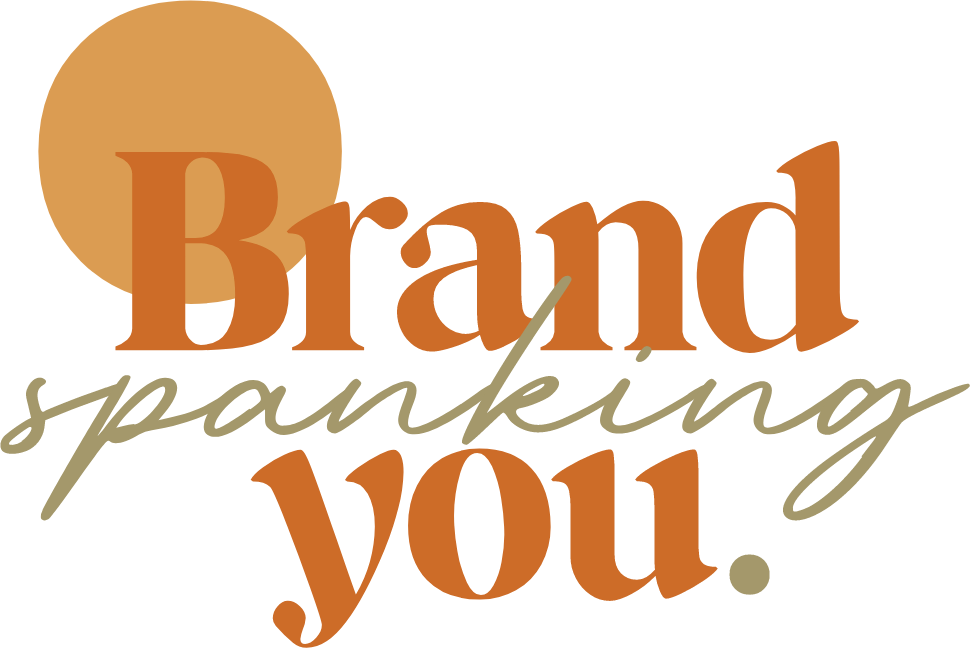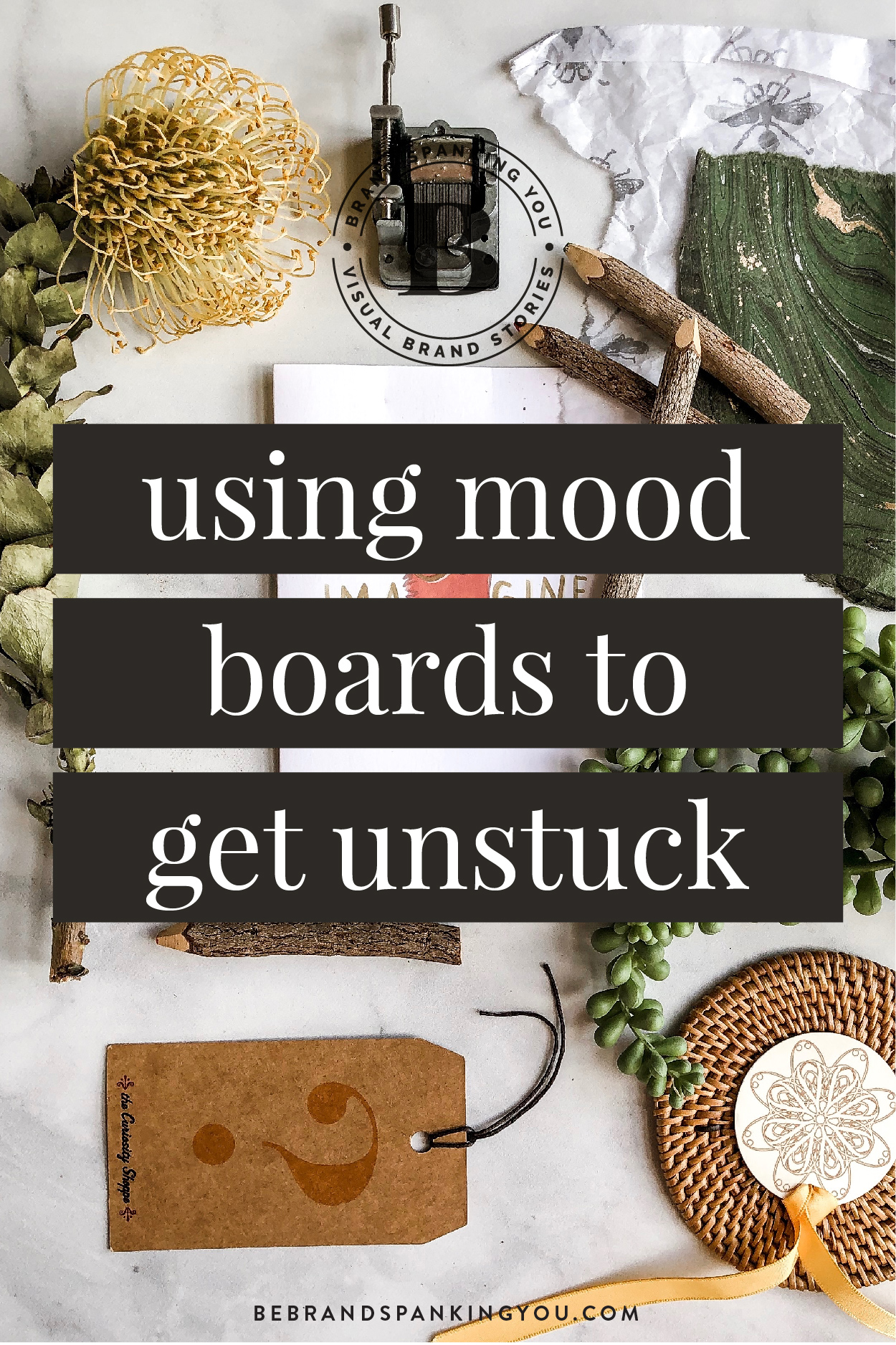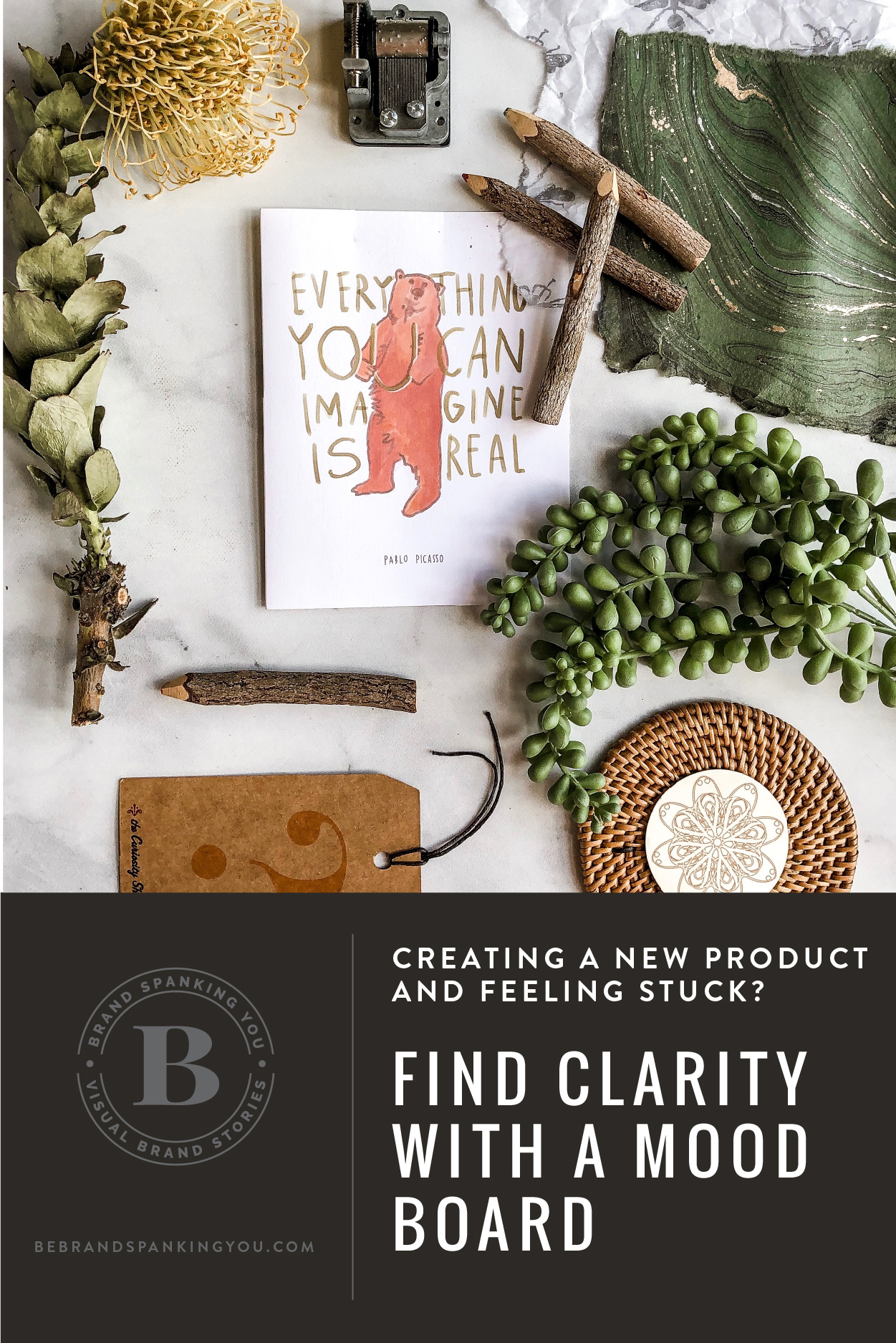Feeling stuck? A mood board might help
When I worked as a full-time designer, I never started a project without doing a mood board. Several, in fact. Sure, sometimes they were for the client- they’re a great tool to help gain alignment before diving into the actual design work- but I actually did them even when they weren’t required for client alignment.
I still make mood boards for myself when I’m creating new products/ services or when I just want to start exploring different blog and social media content directions. Referring back to them ensures that I’m staying true to my initial vision.
Visuals are good like that. In a quick glance you can see where and how you might be veering off track. (You might remember how I’ve been using a mood board to help me hone my photography visual aesthetic.)
So how do you make a mood board anyhow?
Well, my methods are far more art than science, but I believe anyone can put the same principles into practice. And we’re not going to be getting into the actual physical act of making a mood board. I don’t think the medium matters all that much. Just use a method that works for you- be it a design program, free online software like Canva or Adobe Spark, or even old school methods like tearing images out of magazines and mixing them with fabric swatches, dried flowers or the like (still one of my favorite methods, although the ease of digital collages has made the practice almost obsolete for me.)
step 1: write
wait, what? Didn’t I just say above how powerful visuals are for clarity? Yes, but you don’t want to just start pulling things together willy nilly. If you’re only collecting random things that you like or think look cool with no big picture in mind, you’ll end up even more confused than when you began. So write.
Write about what you want to communicate. Maybe it’s just a collection of words like “Ease”, “Strength”, or “Lush.” That’s fine. In fact I highly encourage it.
Then think about WHO you want to communicate to- Are there specific words or phrases that come to mind when thinking about this person or collection of people? How do you want them to feel?
What is the project you’re creating the mood board for all about?
Write it all down. When you’re finished you should have a good collection of words or phrases that begin to give your project shape, meaning and/or feeling.
Step 2: Find images
NOW you can go crazy with images. And when I say crazy, I mean it. This is were using a Pinterest board comes in very handy. Just pin your little heart out. Pin as much stuff as you can as it relates to your keywords and phrases. The more the better. (Or collect, tear, cutout, etc if you’re going analog.)
This is where the art vs science comes in. I like to use my heart/ gut vs my head at this stage when selecting images, textures, etc. It’s all about the feeling(s) you want to evoke, and if you’re overthinking or analyzing while collecting, you’ll probably just frustrate yourself. Leave your brain out of the equation as much as possible, just have fun, and let your heart lead the way.
Step 3: Edit
Once you have a good amount of things collected on your Pinterest board, it’s time to start culling.
You’ll want to take a good look at everything you’ve collected and start to edit down to the 6-8 pieces that do the best job of conveying the essence of your project- as defined by your initial keywords and phrases.
At this point, you can use your pinboard as the final mood board, simply deleting images as you edit down, or transfer images into a design program. You can use paid programs like photoshop or illustrator, or free online tools like canva or adobe spark like I mentioned above.
Now, I’m super curious- have you ever considered making a mood board before? If not, do you think you might try this now when feeling stuck on a project? Why or why not? Let me know in the comments!













